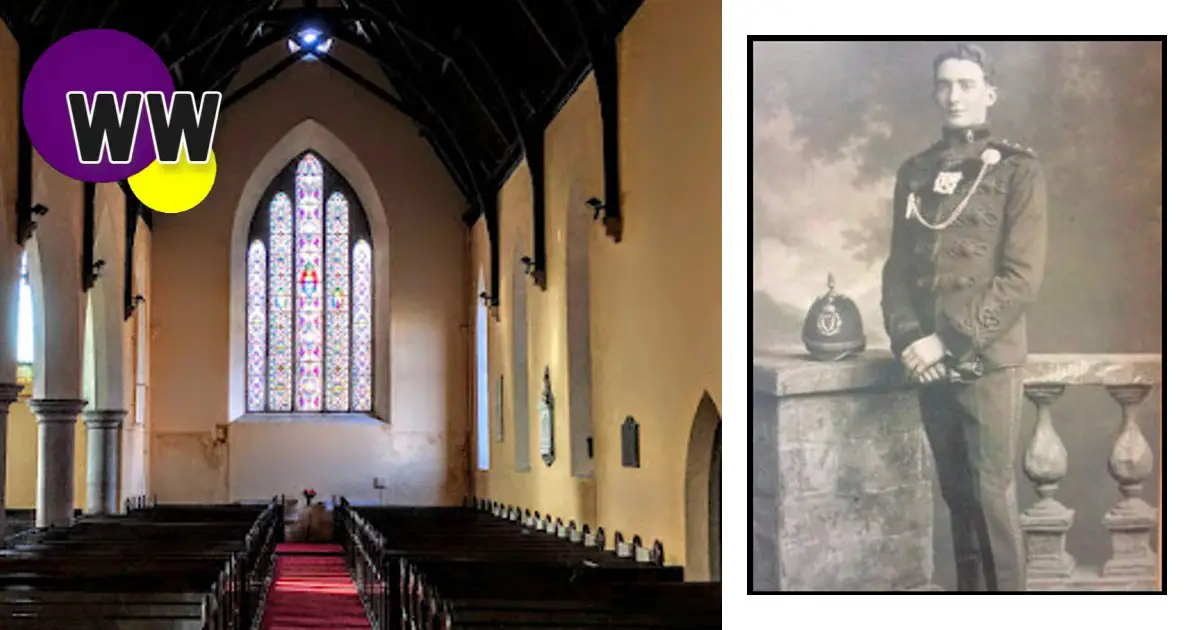
The comedian Dara O’Briain just about got me right – “I don’t believe in God but I’m still Catholic”…
As I grew up I did the whole RC trip, fearsome nuns, the scary first confession, communion and confirmation collections, stifling my yawns during overlong sermons, and shaking hands with complete and utter strangers in the next pew as we exchanged Signs of Peace.
I was educated at Drimnagh Castle CBS and at one point they identified me as a possible Christian Brother novitiate, but let’s face it, Brother Tony would never have cut it.
Despite all of the above I was always fascinated by Protestant churches and Anglican church buildings. Christchurch and St Patricks in Dublin fascinated me, because of their size and the relative bareness of their décor. James Joyce had a lovely line too about worshipping the same God but at different altars, a thought that really appealed to me. I felt too that the stripped down nature of worship, the absence of fixtures and fittings was really noticeable in smaller Church of Ireland chapels. A long time ago a rustic Catholic church I used to attend was getting a lick of paint and in a wonderful piece of ecumenism the local C of I Rector allowed mass to take place in his own House of God. I was really taken with the minimalist appearance of the place. The altar, the pews and the pulpit. It concentrated the mind no end, it was as if God himself picked you up by the cuffs and said “This is my place, you listen to me and pray”.
Some 20 years on and I’ve moved down to Wexford and I’ve taken my Catholicism with me. In truth, I have not been in a Catholic Church since my mother passed last year but the holy, Catholic and apostolic church is still bubbling in the background. And I’m still intrigued by Protestant churches and how they look and feel beyond their grand wooden doors. There is a welcoming sign outside Christchurch Church of Ireland on the Main Street in Gorey and I had to go in. There, there were the Anglican pews, the silence, the altar and the pulpit, but to the left of the altar – the northern transept, are two stained glass windows designed by Harry Clarke and Joshua Clarke. These two works are possibly one of the most beautiful sights in Wexford, a place where beautiful sights abound. I know nothing about the visual arts – I’m still coming to terms with the ramifications of Portrait and Landscape, but these two windows are an absolute riot of colour. They blaze when the sun shines through and they brood as the light is dim or as it fails.
Both windows are full of allusion and hidden biblical references that are completely lost on me and both are equally beautiful and glorying in colour and craft. They were created in memory of Percival Lea Wilson, one window in his memory on behalf of his Freemason brothers, and the other by his devoted wife. The verse at the base of her window reads “Lord, lay not this sin to their charge”. When you read of Lea Wilson’s demise it’s hard not to think, that, as the song says, Mrs Lea Wilson had a heart the size of Texas.
Film buffs will know the form of Lea Wilson from scenes at the start of the Michael Collis biopic. Superbly played by Sean McGinley, a Dublin detective walks among prisoners captured from the GPO in 1916 as they await their fate in the gardens outside the Rotunda Hospital. He identifies the ring leaders of the Rising, drags them out of the crowd with his cane, and kicks James Connolly as he lay prostrate on the ground. Mick Collins wants to intervene, but Dev restrains the Big Man. Later in the movie McGinley’s character is shot in revenge on a Dublin tram.
It’s a neat little summation of Lea Wilson’s little life but the truth does not necessarily spoil a good story in this case. For one thing, Lea Wilson himself was English, though he had married an Irish girl. He did not kick James Connolly but he manhandled Thomas Clarke pretty badly and stripped him in front of the nurses looking on from the Rotunda window. He treated other prisoners fairly shabbily too and the episode reflected very poorly on him. Some of his British Army colleagues did a lot worse earlier that week. Bowen Colthurst, a man clearly struggling from shellshock, or to give its modern term PTSD, took Sheehy Skeffington, an eccentric but harmless pacifist, and two other totally innocent men, stood them against a wall in the Portobello barracks and summarily shot the three of them. Lea Wilson had clearly let himself and the Army down but he could have done much worse.
From any remove you could argue that by behaving as he did Lea Wilson wrote his own death warrant. He subsequently left the army and joined the constabulary and he took on the role of District Inspector in Gorey. The Gorey station itself was destroyed by the rebels but things were quiet enough on his watch. Almost inevitably, a gang came down from Dublin and shot him dead there on the Ballycanew Road. He must have been in shock in those last few moments but you could hardly think he was surprised. His currency was bullets and in bullets he was paid.
When he died he RIC produced a memorial page praising him for his “overflowing gaiety, his unfailing kindliness, his open hearted generosity”. Fulsome words, but you could hardly expect less. There are several memorial stones spotted around our towns and country commemorating fallen dead from the War of Independence and the Civil War but there is no stone marking where Lea Wilson was shot. And it would have been a lonely stone if one had been set in his memory. There would have been no sympathy for him in these or other parts. There was a report that when Mick Collins was told of his death he laughed that “We got the bastard!!”. I’m no sympathiser or revisionist myself, the rebels in 1916 were not elected, they represented a tiny part of the republican constituency. But they were the bravest men in Ireland.
It’s too easy to dismiss Lea Wilson as an army blackguard but if you look at his experiences before the Rising you see him in a different light. For one thing, he defied social convention by marrying a Irish catholic girl and he did not compel her to change faith. She never remarried after he was taken, so in his marriage at least he was on the side of the angels. Remember too that when he landed in Dublin in 1916 he was returning from the Western Front, he captained his company there and was sent home injured. If he was injured in fighting he would have been in the thick of it with his men and if he was he would have seen sights no man should have seen.
To my mind the best portrayal of trench life is set out in Wade Davis’ “Into the silence”, a biography of the climber George Mallory. The trenches themselves had an overwhelming aroma of death and decay, there would have been long spells of boredom interupted by short sharp spells of manic violence, with colleagues dying in front of Lea Wilson’s eyes. He did not just look through the gates of Hell, for a while he took up residence there.
Clearly when Lea Wilson returned to Dublin he would have been suffering with PTSD for which minimal treatment or understanding was available or developed. In the early part of the Rising he may well have lost colleagues and pals in the fighting around Northumberland Road in particular and latterly around North King Street. Eight men of his own Royal Irish regiment were killed in the rising itself. Understandably, Lea Wilson’s blood was up that day outside the Rotunda. You would have to wonder, in fairness if this man was such a monster. The two plate glass windows themselves could not have been created to commemorate a bad man. Maybe, like so many at that time, he lost his soul and his decency in the trenches, in the stink and in the mire. He’s best remembered as the sun rises and falls each day and gives and takes its light to those gorgeous windows.
The windows still stand and at the end of this and all other things I’m still a Catholic boy. This Christmas Eve I hope to attend mass in our gorgeous little parish church. The holly and the ivy, the Silent Nights and the Signs of Peace. And I’ll pray too. For my wife and children, for family and friends. For the hurlers on heavenly ditches and for lost cricketers in eternal pavilions. And I’ll say one too for Percival Lea Wilson. Let’s face it, prayer is never wasted on anybody.
By Anthony Morrissey




